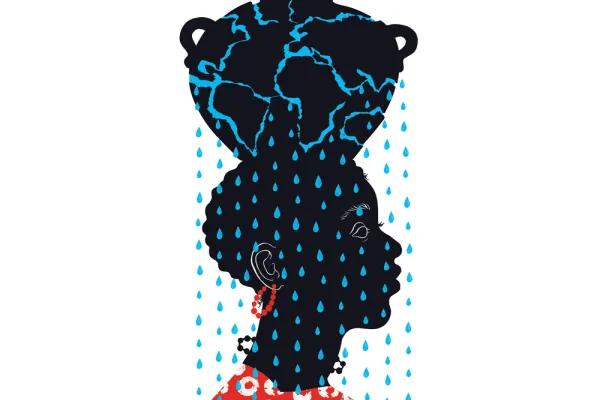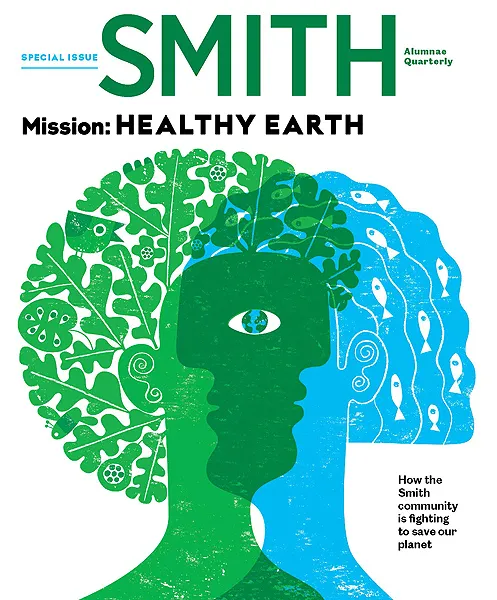How Does Climate Change Uniquely Threaten Women?
Sustainability

Published March 25, 2020
In November 2013, a “super typhoon” hit the Philippines, nearly destroying the coastal city of Tacloban and leaving more than 4 million people displaced. In the days that followed, thousands took shelter at a local sports arena.
We’ve heard this kind of story time and time again as global warming has increased the intensity of typhoons and hurricanes, resulting in more “worst-ever” weather events. But we are less likely to hear what happens next.
In the aftermath of Tacloban’s super typhoon, with police and security forces focused on search and rescue, women and girls became targets of sexual assault and sex trafficking. One young girl said she was sold to men every night, some of them foreign aid workers. Others took graphic photos and videos. The girl was 13. As a report on her case put it, “Climate change has created a new generation of sex-trafficking victims.”
Educator and environmentalist Bill McKibben warns that extreme weather is shrinking the planet, as wildfires, heat waves and rising sea levels are making large areas of the Earth uninhabitable and forcing people to migrate. The resulting dislocation, instability and increased poverty make women and girls particularly vulnerable to sexual exploitation and abuse. According to a report by the United Nations Environment Programme, human trafficking increases significantly during natural disasters.
But increased sexual exploitation is just one of many reasons that climate change is a feminist issue. Across the world, women are primary caregivers for children and are responsible for feeding their families, tasks made much harder when flooding and drought occur.
U.N. Women Executive Director Phumzile Mlambo-Ngcuka argues in a U.N. climate report that climate change amplifies existing gender inequalities in the world. “Women and girls are the last to eat or be rescued. They face greater health and safety risks as water and sanitation systems become compromised. And they take on increased domestic and care work as resources dwindle,” Mlambo-Ngcuka writes. “Poverty, meanwhile, leads to earlier marriages, lost education and diminished opportunities.”
Sexual exploitation, health and safety risks and adverse pregnancies are exacerbated by climate change.
For example, women and girls across the world are responsible for collecting water in 80 percent of households without access to piped water. According to Mlambo-Ngcuka, “Climate-induced drought and scarcity affects the time and effort required to collect, secure, distribute and store water, fuel and other resources.”
Climate change also harms pregnant and parenting women. Increasing heat and air pollution is associated with adverse pregnancy outcomes, including premature birth, low-birth-weight babies and stillbirth. As primary caregivers for children, women are more likely than men to shoulder the burden of caring for children with health problems aggravated by climate change, such as asthma and allergies.
While climate change impacts us all, its effects fall particularly hard on women and girls because of inequalities based not only on gender, but also on race, class and nationality. Globally, women and girls represent 70 percent of the total population living in poverty. People living in poverty are more exposed to the harmful effects of climate change, as are people of color. The combined effects of inequalities based on gender, race, national origin and economic class make the harmful impacts of climate change fall most harshly on women and girls of color, especially in the Global South.
Climate change is a human rights issue. We all have the right to a healthy environment with clean drinking water, breathable air and a safe and sustainable place to live. Climate change threatens this basic right.
While there are many reasons to be concerned about the climate crisis, the disproportionate impact of climate change on women and girls is often overlooked. On our current path, we face full-scale, climate-induced calamity that will harm us all—but will subject women and girls to particularly acute forms of gendered violence and deprivation. To change course, we need social revolution and female empowerment.
 Carrie Baker is a professor of the study of women and gender at Smith.
Carrie Baker is a professor of the study of women and gender at Smith.
This story appears in the Spring 2020 issue of the Smith Alumnae Quarterly.
SMITH ALUMNAE QUARTERLY
Special Climate Issue

Mission: HEALTHY EARTH
How the Smith community is fighting to save our planet
Illustration by Melinda Beck